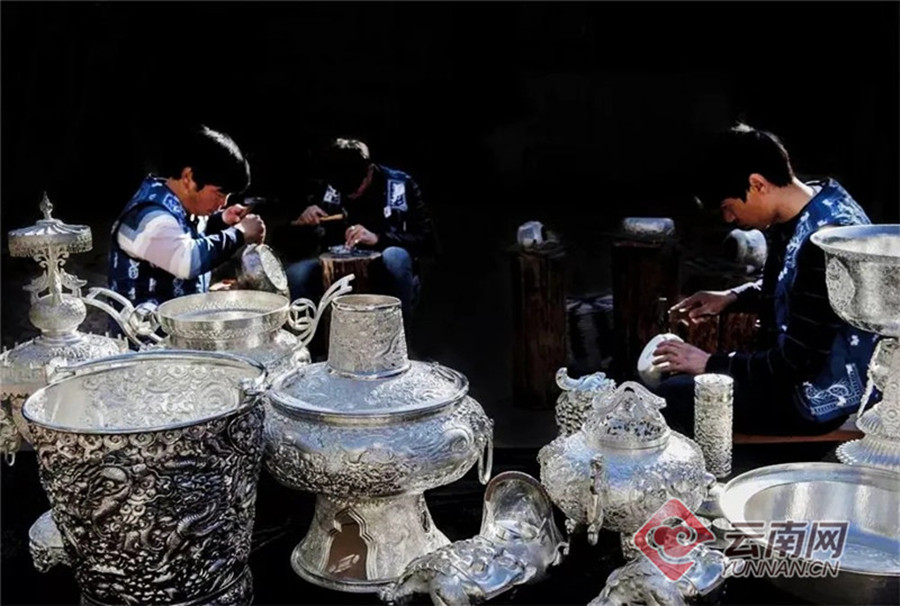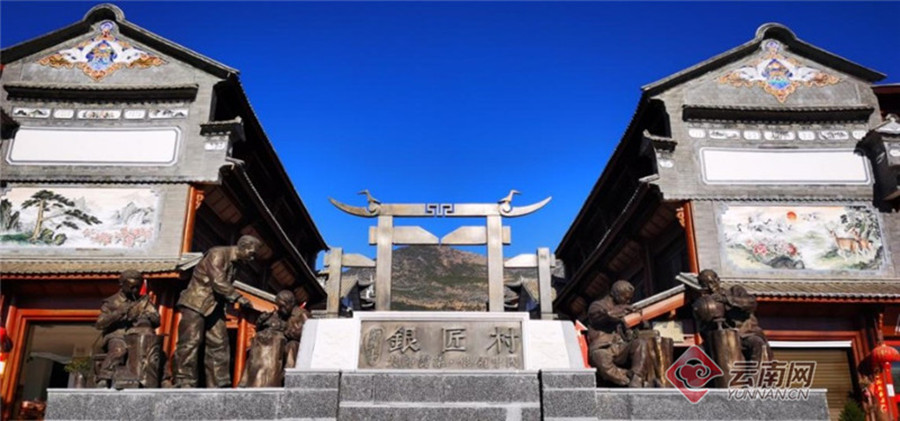Heqing silver wares sold to neighboring countries
“More than 20,000 people in Heqing are engaged in making silver handicrafts, and around 10 million pieces are sold to Chinese provinces and the neighboring countries of India, Nepal, Thailand, Malaysia and others,” said Chen Dongping, director of the Heqing county employment bureau, west Yunnan’s Dali prefecture.
Chen said this on the occasion of the recent national entrepreneurship and employment exchange activities in northeast China’s Jilin province, where “Heqing Silversmith” was honored as a brand in leading the labor services.

In a bid to boost local employment, Heqing build up the Xinhua distinct tourist town that houses 9,000 villagers working as silver smiths or silver-ware sales persons. The annual output value of the silver town has reached 2.6 billion yuan, with the online sales exceeding 100 million yuan.
Heqing is well known for its silver handicraft processing. The history of Heqing silver handicrafts dates back to the period of Nanzhao Kingdom (738-902) in the Tang Dynasty.
While inheriting the craftsmanship, Heqing silversmiths also absorbed the cultures of other ethnic groups, giving rise to a variety of silverware crafts with exquisite skills and patterns.

Now an increasing number of Heqing smiths work outside, letting the silver wares known to more. In Xizang, over 4,000 Heqing natives are selling silver wares and others, and their annual sales have reach 450 million yuan in the Tibetan region.

From accessories to decoration items, the silver crafts are highly valuable to cultural elites or antique collectors. In 2014, the Heqing silver forging skill was listed as an intangible heritage under cultural protection.

Reporting by Yang Ping (Yunnan Daily); Trans-editing by Yang Xuan and Wang Shixue